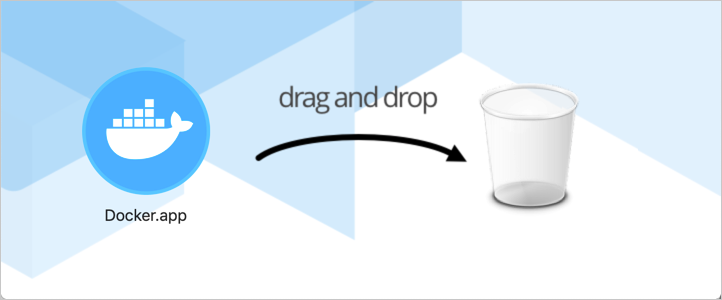

- #DOCKER FOR MAC NOT WORKING AFTER STOPING MINIKUBE INSTALL#
- #DOCKER FOR MAC NOT WORKING AFTER STOPING MINIKUBE DRIVERS#
- #DOCKER FOR MAC NOT WORKING AFTER STOPING MINIKUBE UPGRADE#
- #DOCKER FOR MAC NOT WORKING AFTER STOPING MINIKUBE SERIES#
- #DOCKER FOR MAC NOT WORKING AFTER STOPING MINIKUBE WINDOWS#
#DOCKER FOR MAC NOT WORKING AFTER STOPING MINIKUBE DRIVERS#
Multiple drivers that can match any environment.
#DOCKER FOR MAC NOT WORKING AFTER STOPING MINIKUBE WINDOWS#

Kube-system deployment.apps/kube-dns 1 1 1 0 11h Kube-system deployment.apps/heapster-v1.5.2 1 1 1 1 11h

NAMESPACE NAME DESIRED CURRENT UP-TO-DATE AVAILABLE AGE Kube-system service/monitoring-grafana ClusterIP 10.152.183.253 80/TCP 11h Kube-system service/kubernetes-dashboard ClusterIP 10.152.183.77 443/TCP 11h NAMESPACE NAME TYPE CLUSTER-IP EXTERNAL-IP PORT(S) AGEĭefault service/kubernetes ClusterIP 10.152.183.1 443/TCP 12h Kube-system pod/monitoring-influxdb-grafana-v4-7ffdc569b8-g6nrv 2/2 Running 4 11h Kube-system pod/kubernetes-dashboard-6948bdb78-z4knb 1/1 Running 97 11h Microk8s can be installed as a single snap command, directly from the Snap microk8s.kubectl get all -all-namespaces
#DOCKER FOR MAC NOT WORKING AFTER STOPING MINIKUBE UPGRADE#
The Snap tool is taking care of all needed operations and can upgrade all associated binaries to their latest versions. This isolation is achieved by packaging all the binaries for Kubernetes, Docker.io, iptables, and CNI in a single snap package (available only in Ubuntu and compatible distributions).īy installing Microk8s using snap, you are able to create a “clean” deploy of the latest upstream Kubernetes on your local machine without any other overhead. It is designed to be a fast and lightweight upstream Kubernetes installation isolated from your local environment. It was developed by the Kubernetes team at Canonical. Microk8s is a new solution for running a lightweight Kubernetes local cluster. (See the previous article on Windows for an Nginx deployment example). Managing a Minukube cluster on Linux is exactly the same as managing it on Windows. In our evaluation we used Ubuntu 18.04 LTS with VirtualBox support using the following commands:
#DOCKER FOR MAC NOT WORKING AFTER STOPING MINIKUBE INSTALL#
In order to install Minikube to Linux, you can follow the steps described in the official documentation. It also supports multiple hypervisors, such as Virtualbox, kvm, etc. Minikube supports most typical Kubernetes features such as DNS, Dashboards, CNI, NodePorts, Config Maps, etc. The result is a local Kubernetes endpoint that you can use with the kubectl client. Virtualbox ) in your local development environment. Minikube runs a single-node Kubernetes cluster inside a VM (e.g. We are evaluating these solutions and providing a short comparison based on ease of installation, deployment, and management. Instead we are going to look at MicroK8s, a Linux only solution for a lightweight local Kubernetes cluster. Unfortunately, Docker desktop is not available for Linux.
#DOCKER FOR MAC NOT WORKING AFTER STOPING MINIKUBE SERIES#
Update: the third part of the series for Mac is also available. In the previous article of this series, we described two solutions for local Kubernetes development on Windows


 0 kommentar(er)
0 kommentar(er)
